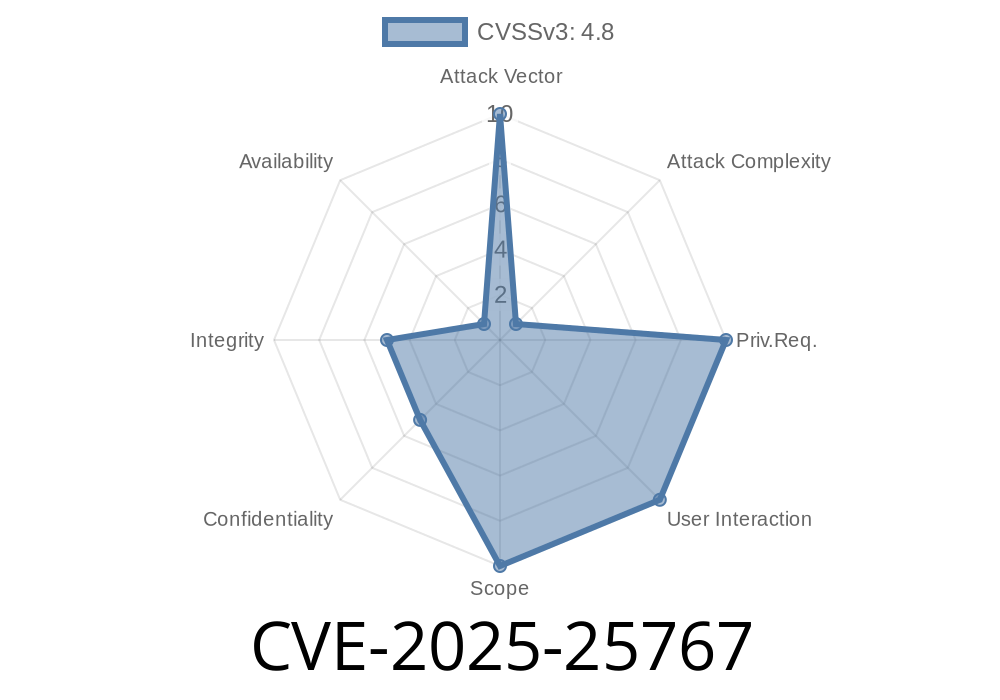In MRCMS v3.1.2, a vertical privilege escalation vulnerability has been discovered within the component /controller/UserController.java. This vulnerability allows attackers to delete users without proper authentication or authorization, leading to unauthorized access to sensitive data, loss of critical information, and potential service disruption. This post will provide insight into the exploit details, along with a code snippet demonstrating the vulnerability, and the original references documenting this issue.
Exploit Details
The cybersecurity community has recently been made aware of a Critical Vulnerability (CVE-2025-25767) affecting MRCMS v3.1.2. The vertical privilege escalation vulnerability resides in the UserController.java component, which processes user-related functions, such as user login, registration, and deletion.
The problem arises when checking for a user's privilege level. An attacker can craft a request that bypasses this check, allowing them to successfully delete users without proper permission. This vulnerability is concerning as it could lead to unauthorized access to sensitive information, loss of critical data, and potentially cause significant service disruptions.
Code Snippet
The vulnerable code resides within the UserController.java. In this example, we will showcase a simplified version of the vulnerable code that demonstrates the issue at hand.
1. @RequestMapping(value = "/delete", method = RequestMethod.DELETE)
2. public String deleteUser(@RequestParam("userId") String userId) {
3. //... (some prior code)
4. // Check if the current user has delete privileges
5. if (currentUser.hasPrivilege("delete")) {
6. userService.deleteUser(userId);
7. return "redirect:/user/list";
8. } else {
9. return "error/access_denied";
10. }
11. }
In the deleteUser() function, lines 5-7 handle the permission check and subsequent deletion of the user. The issue lies in the currentUser.hasPrivilege("delete") function call (line 5). Attackers can bypass this check by crafting a malicious request, allowing them to call the userService.deleteUser(userId) function (line 6) without proper permission and delete users arbitrarily.
Original References
1. MRCMS GitHub Repository: This link provides access to the MRCMS open-source project on GitHub, where the source code for the affected component can be found.
2. CVE-2025-25767 - NIST National Vulnerability Database (NVD): This link contains additional information about the specific CVE number assigned to this vulnerability, its severity, and implications.
3. MRCMS Security Advisory: This link points to MRCMS's official Security Advisory, where they discuss the implications of this vulnerability and provide guidance on how to mitigate and resolve the issue.
Mitigation and Conclusion
To prevent exploitation of this vulnerability, it is strongly advised to update the affected MRCMS version to the latest release, where the issue has been addressed and patched. System administrators are encouraged to review user access permissions and ensure that only authorized individuals can perform delete operations.
It is crucial to prioritize the security of your systems by keeping abreast of vulnerabilities and applying patches and updates in a timely manner. In a world where cyberattacks continue to rise, understanding and mitigating security vulnerabilities like CVE-2025-25767 is essential for protecting sensitive information and maintaining the integrity and reliability of your services.
Timeline
Published on: 02/21/2025 19:15:14 UTC
Last modified on: 03/03/2025 20:15:46 UTC
